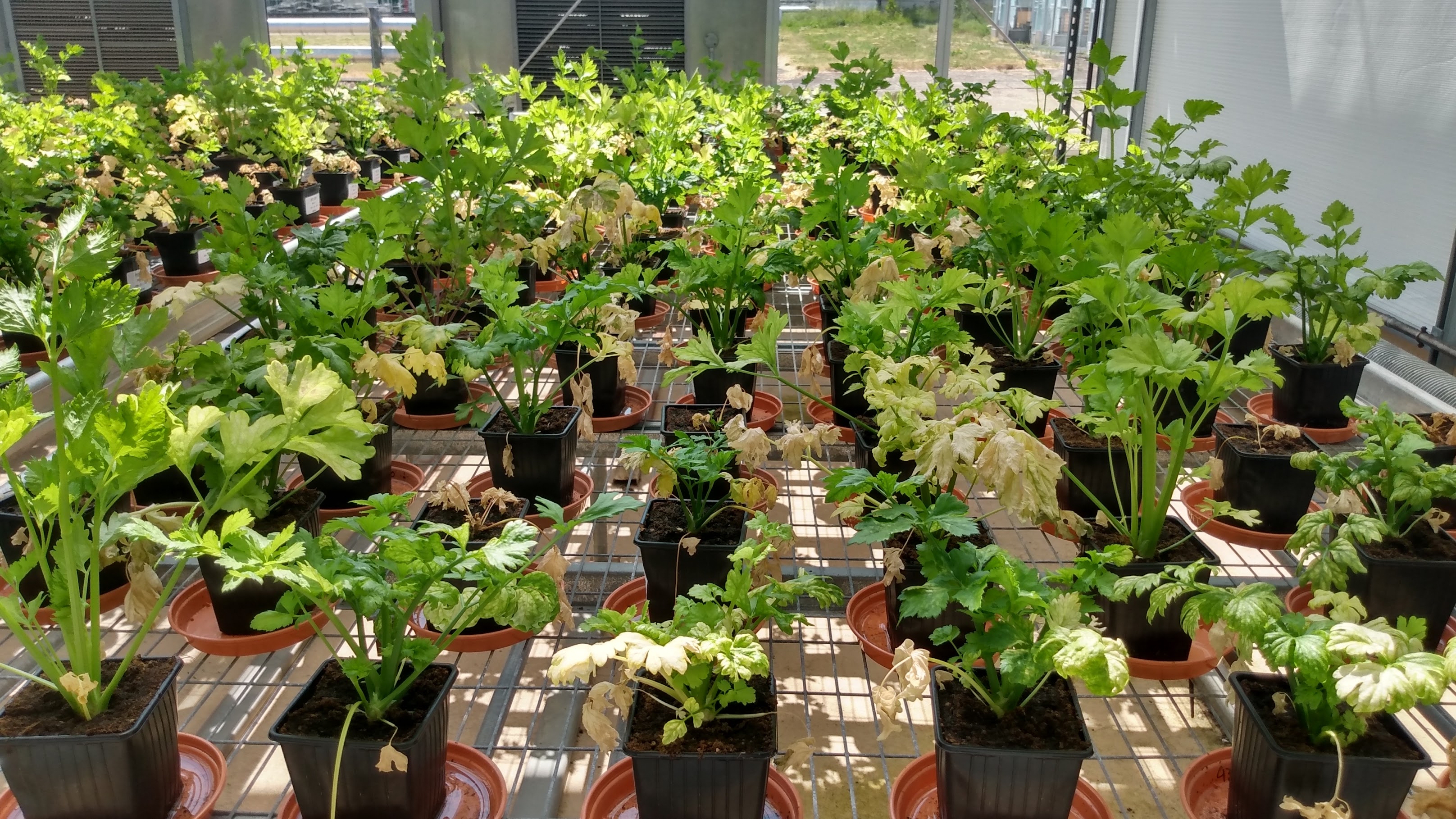Fusarium in Celery
Fusarium in Celery
Funded by BBSRC and Defra (VeGIN)
Carried out by Sascha Jenkins, Nicole Pereira and Lauren Chappell. Supervised by Prof. John Clarkson
Celery (Apium graveolens) is a major crop cultivated worldwide that is an important contributor to a healthy diet being high in fibre, and containing minerals, vitamins as well as medicinally beneficial flavonoid compounds. The biggest producers of celery include the USA and Spain but production in the UK is also substantial with a value of £32M (Defra Horticulture Statistics, 2020).
The soilborne plant pathogenic fungus Fusarium oxysporum (f.sp. apii) causes Fusarium yellows and wilt of celery and is the most important and significant disease affecting production and infection through the roots results in stunting, yellowing and wilting symptoms. Control of the disease is difficult as application of fungicides and use of rotations are largely ineffective. Furthermore, employing plant resistance is challenged by the evolution of resistance-breaking races with the recently emerged race 4 being particularly virulent on many current cultivars. Currently, Fusarium disease predominantly affects celery production in the USA and China, but there is a very high risk of the pathogen spreading to major crop and seed production areas in Europe such as Spain, Italy where there are already anecdotal reports of typical symptoms.
Research at Warwick in collaboration with Tozer Seeds, who are a major supplier of celery seed globally, aims to identify new sources of resistance celery wilt. Good levels of resistance to race 4 have been found in a diverse collection of celery germplasm in glasshouse tests where plants were planted in inoculated growing medium. Further work will aim to identify the underlying genetic basis for this resistance to accelerate Tozer’s breeding programme.




